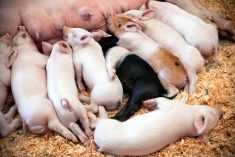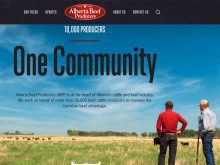CALGARY – Cattle prices remain in the dumps, but producers can see themselves through the downturn by adopting a disciplined approach to marketing and by producing high quality cattle, according to a market analyst.
“We’ve gone through the days when everything brought premiums but now we’re going to see the market much more disciplined as far as what they do take and what they don’t take,” said Anne Dunford of Canfax, the market analysis arm of the Canadian Cattlemen’s Association.
“The trends you are going to see are quality cattle will bring premiums,” said Dunford.
Read Also

Sheep sector navigates changes in traceability
The sheep sector is developing advanced traceability systems and addressing ongoing challenges in accessing veterinary drugs and treatments.
There are 4.5 million beef cows in Canada producing record amounts of beef.
In the United States, cattle producers have already begun to sell off their breeding stock, but the Canadian cattle population continues to increase with the peak expected by 1997, said Dunford at the recent Alberta Cattle Feeders Association convention attended by more than 650 people.
Dunford told the producers to watch for three key elements to determine if herd liquidation has started.
Producers should look for more heifers destined for slaughter, increased cow slaughter and more animals culled from herds.
Increased heifer marketings have already appeared this January which should edge up the percentage of females fed for slaughter rather than retained for breeding. In 1994 and 1995, 40 percent of slaughtered animals were female.
Canada continues to experience a low cow culling rate of about nine percent each year during the last two years.
“1994 was the smallest cow kill we’ve seen in recorded history,” she said.
Cow slaughter was up two percent in 1995 but not enough to signal the start of a liquidation phase. Dunford expects the cow slaughter to rise by 10-12 percent by the second half of 1996.
Cattle continue to enter feedyards heavier than average as producers try to break even by adding extra pounds to animals. In 1980, the average carcass weight was 600 pounds. In 1995, the average weight came in at 730 pounds.
Steer prices are down significantly from the highs of 1993 when profits were spurred by a declining Canadian dollar, cheap feed grain and a tight supply of feeders which were bid up by American buyers.
This year the dollar is stable, feed is pricey and there are lots of feeder calves around.
Fed cattle prices were hovering around 80 cents or less in 1995. Last year at this time, they were worth 97.25 cents.
Exports are doing well but shifts have occurred.
A few years ago, record numbers of feeder calves went south. Last year barely 50,000 were fed out in the United States but 925,000 head of slaughter cattle went to U.S. packers in 1995.
Strong exports won’t reverse the downturn but could soften the blow.
One bright item in Dunford’s report was increased beef consumption. In 1995, Canadians ate 2.8 billions lbs. of beef, four percent more than in 1994.
In 1996, Dunford predicts Canadians will eat a record level of nearly eight billion lbs. of meat that includes beef, pork and poultry. The average Canadian eats 54 lbs. of beef annually, 55 lbs. of chicken and 48 lbs. of pork.















